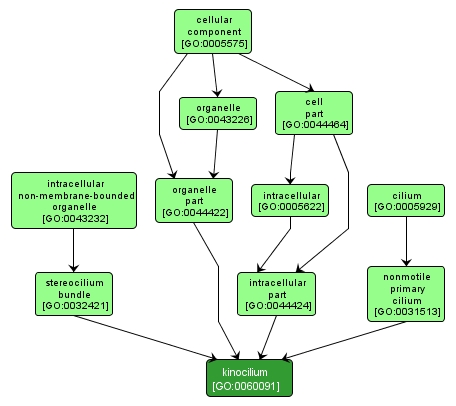GO TERM SUMMARY
|
| Name: |
kinocilium |
| Acc: |
GO:0060091 |
| Aspect: |
Cellular Component |
| Desc: |
An immotile primary cilium that is found at the apical surface of auditory receptor cells. The kinocilium is surrounded by actin-based stereocilia. |
|

|
INTERACTIVE GO GRAPH
|














